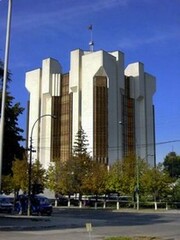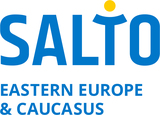Main facts about Moldova
Official Name:
Republic of Moldova | Republica Moldova (Romanian)
Capital:
Chișinău
Date of Formation:
On 27 August 1991, as the dissolution of the Soviet Union was underway, the Moldavian SSR declared independence and took the name Moldova.The constitution of Moldova was adopted in 1994. The strip of the Moldovan territory on the east bank of the Dniester has been under the de facto control of the breakaway government of Transnistria since 1990.
The Flag:
 The state flag of the Republic of Moldova (Romanian: Drapelul Moldovei) is a vertical tricolour of blue, yellow, and red, charged with the coat of arms of Moldova (an eagle holding a shield charged with an aurochs) on the center bar. The obverse is mirrored. The flag ratio is 1:2. Until further provisions, the State Flag of Moldova is used as the national flag and ensign as well, that is, civil, state and war flag and ensign.
The state flag of the Republic of Moldova (Romanian: Drapelul Moldovei) is a vertical tricolour of blue, yellow, and red, charged with the coat of arms of Moldova (an eagle holding a shield charged with an aurochs) on the center bar. The obverse is mirrored. The flag ratio is 1:2. Until further provisions, the State Flag of Moldova is used as the national flag and ensign as well, that is, civil, state and war flag and ensign.

The Coat of Arms:
The State coat of arms shall consist of a shield divided horizontally into two parts: the upper part being of a red chromatics and the lower part - blue chromatics with a superimposed auroch’s head showing between its horns an eight-pointed star. On its right the auroch’s head is flanked by a five-petalled rose, and on its left by a slightly rotated crescent. All heraldic elements present on the shield are of golden (yellow) colour. The shield is laid on the breast of a natural eagle holding in its beak a golden cross, in its right claw a green olive-tree branch and in its left claw a golden sceptre.
The Anthem:
"Limba noastră" (Our language; Romanian pronunciation: [ˈlimba ˈno̯astrə] (About this soundlisten)) is the national anthem of Moldova. It has been used since 1994 and was officially adopted on 22 July 1995.
State Organization:
Moldova is a unitary parliamentary representative democratic republic. The 1994 Constitution of Moldova sets the framework for the government of the country. A parliamentary majority of at least two-thirds is required to amend the Constitution of Moldova, which cannot be revised in time of war or national emergency.
Amendments to the Constitution affecting the state's sovereignty, independence, or unity can only be made after a majority of voters support the proposal in a referendum. Furthermore, no revision can be made to limit the fundamental rights of people enumerated in the Constitution.
The Constitution:
The Constitution of the Republic of Moldova is the fundamental law of Moldova. The current Constitution of Moldova was adopted on 29 July 1994 by the Moldovan Parliament. It came into force on 27 August 1994 and has since been amended 8 times.
The Constitution established the Republic of Moldova as a sovereign state, independent and neutral; a state of law governed by a set of principles including the separation and cooperation of powers, political pluralism, human rights and freedoms, observance of International Law and International Treaties. It delineates the formation and function of the state's main institutions: Parliament, Cabinet, President and Judiciaryas adopted on July 5, 1995, through a popular referendum.
Read more about the general information about Moldova HERE
Media:
The mass media in Moldova refers to mass media outlets based in the Republic of Moldova. Television, magazines, and newspapers are all operated by both state-owned and for-profit corporations which depend on advertising, subscription, and other sales-related revenues. The Constitution of Moldova guarantees freedom of speech. As a country in transition, Moldova's media system is under transformation.
Read more about the Media and Censorship in Moldova HERE
 President Palace
President Palace Nistru River
Nistru River
